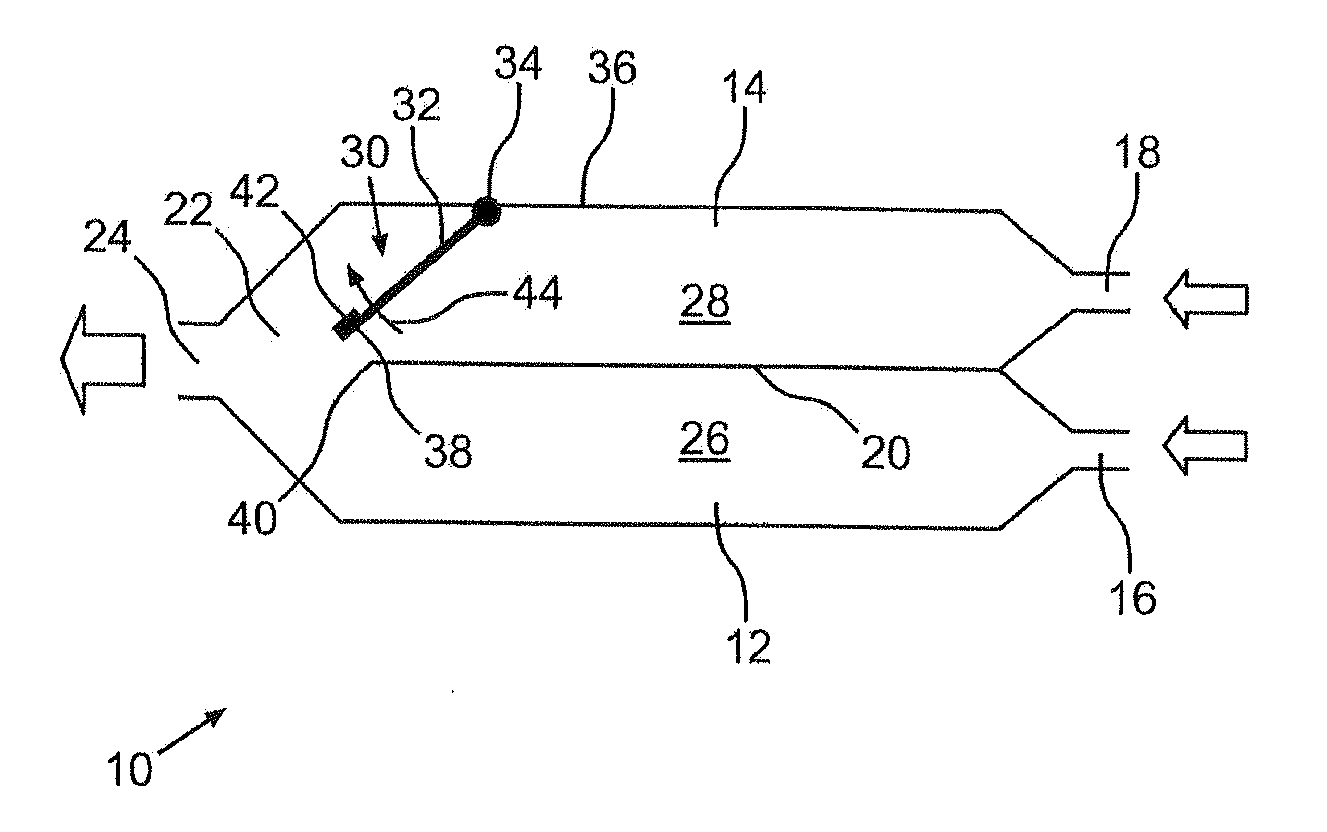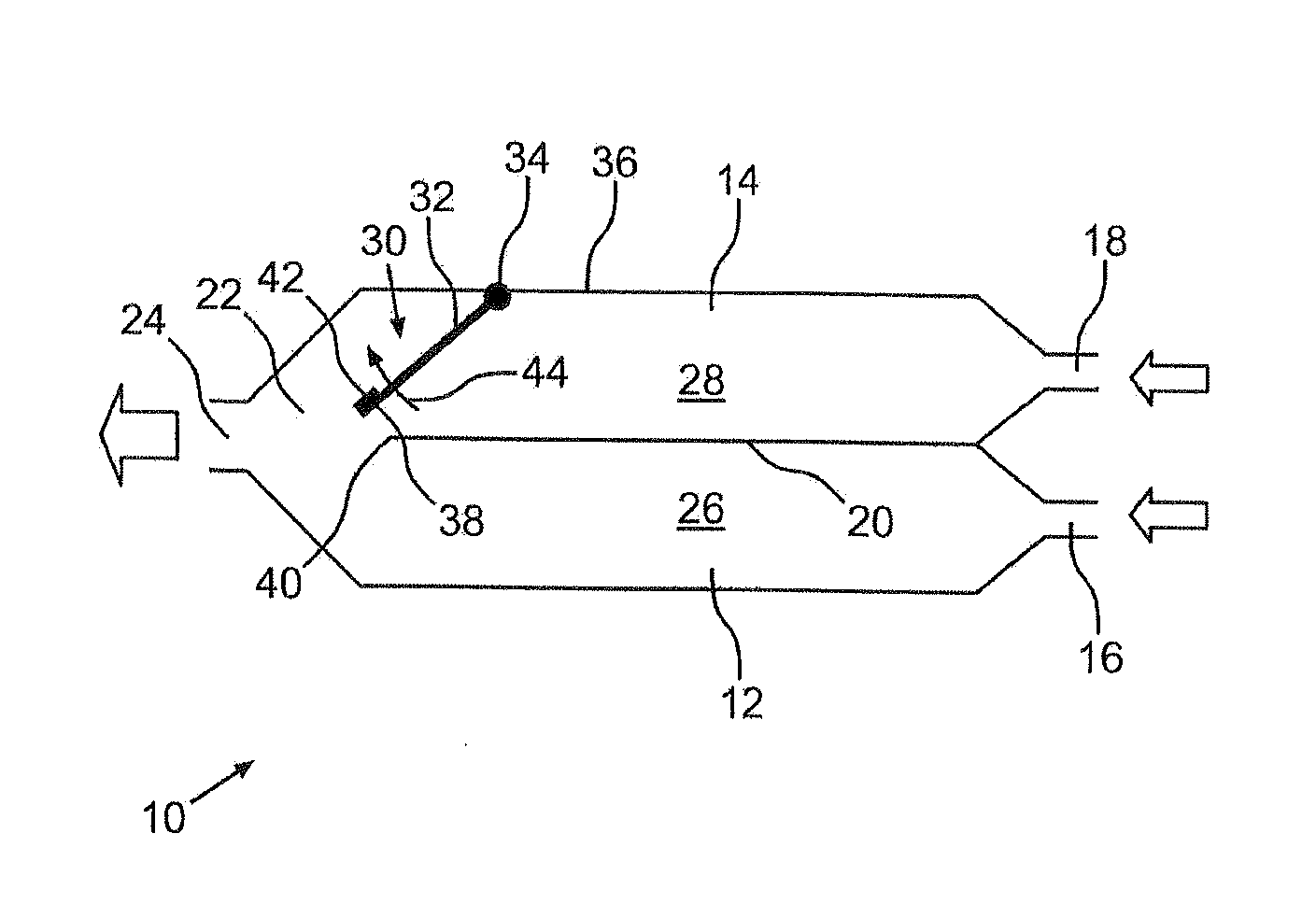Intercooler
a technology of intercooler and pressure loss, which is applied in the direction of combustion engine, combustion air/fuel air treatment, charge feed system, etc., can solve the problem of pressure loss rise in the intercooler
- Summary
- Abstract
- Description
- Claims
- Application Information
AI Technical Summary
Benefits of technology
Problems solved by technology
Method used
Image
Examples
Embodiment Construction
[0017]An intercooler that is designated as a whole as 10 consists of two separate heat exchanger modules 12 and 14. Accordingly, a first air inlet opening 16 is associated with the heat exchanger module 12. In motor vehicles with a step-by-step supercharging, in which a first supercharging assembly runs continuously and a second supercharging assembly is turned on only if necessary, the first continuously-running supercharging assembly is connected to the air intake 16 of the heat exchanger module 12. The compressor exhaust of the supercharging assembly that is turned on only if necessary is connected to a second air inlet opening, 18, which is associated with the heat exchanger module 14.
[0018]A partition 20, which separates the air streams in the heat exchanger modules 12 and 14 from one another, is arranged between the heat exchanger modules 12 and 14. These air streams are brought together again only in an air box 22 of the intercooler 10 and exit via an air outlet opening 24 fr...
PUM
 Login to View More
Login to View More Abstract
Description
Claims
Application Information
 Login to View More
Login to View More - R&D
- Intellectual Property
- Life Sciences
- Materials
- Tech Scout
- Unparalleled Data Quality
- Higher Quality Content
- 60% Fewer Hallucinations
Browse by: Latest US Patents, China's latest patents, Technical Efficacy Thesaurus, Application Domain, Technology Topic, Popular Technical Reports.
© 2025 PatSnap. All rights reserved.Legal|Privacy policy|Modern Slavery Act Transparency Statement|Sitemap|About US| Contact US: help@patsnap.com


